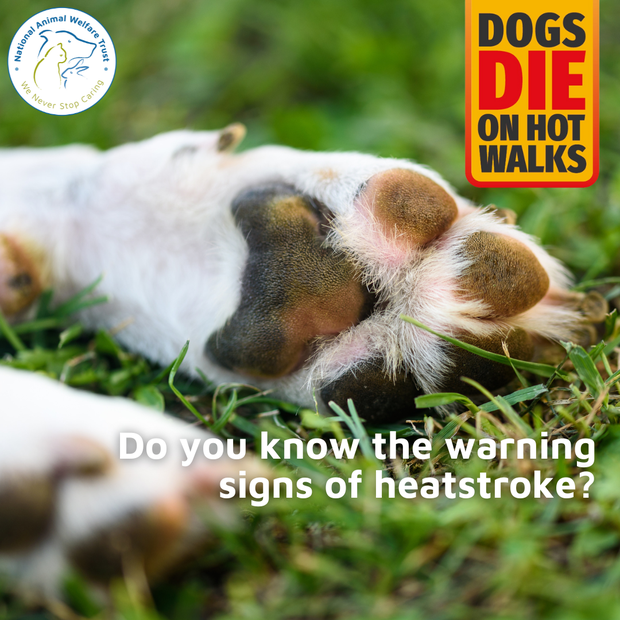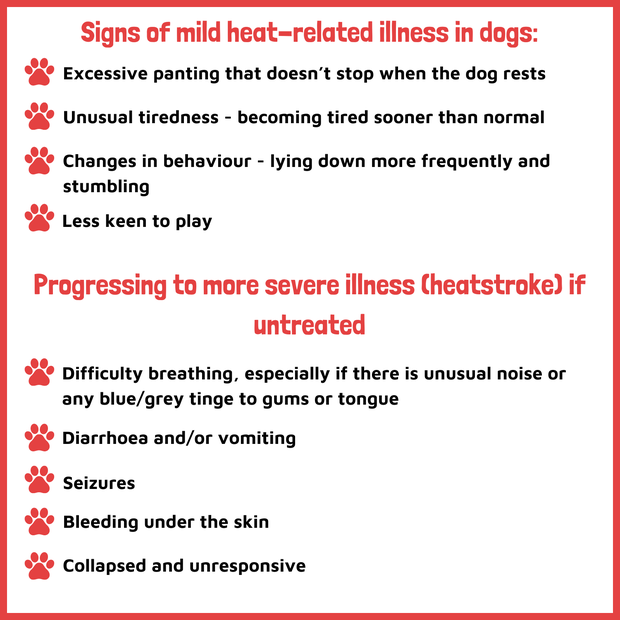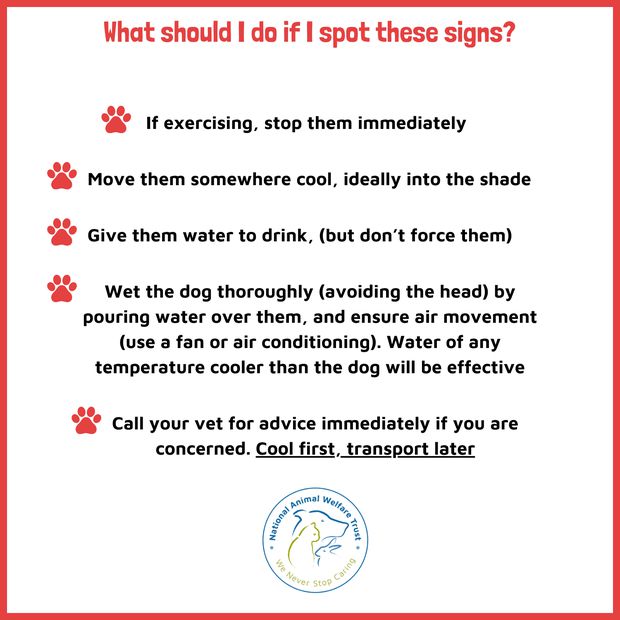Vets see five times more heatstroke cases during hot weather – dog owners urged to prepare against summer heat tragedy
Despite one in four heatstroke patients dying, almost half of owners may still leave their dog in a hot car.
Dog owners are being encouraged to get savvy about the risks from hot weather as the Met Office predicts it will soon turn "much warmer" in large parts of the country, as staggering new data shows vets see five times as many cases of heatstroke during hot weather than even the rest of summer.
As the Met Office predicts next week it will turn "much warmer" in large parts of the country, animal welfare charities and veterinary organisations are teaming up to urge pet owners to be extra cautious when it comes to warm weather.
Predicted temperatures this weekend include up to 24°C for London, up to 22°C for Birmingham and up to 21°C for Cardiff. Figures from the Royal Veterinary College’s latest heatstroke study reveal the number of heatstroke cases vets dealt with increased five-fold during the heat-health alert periods (heatwaves) between June to August in 2022, and one in four affected dogs died.
After 2022’s record-breaking hot summer, a survey by the British Veterinary Association found one in 10 (9%) of vets in small animal practice had seen at least one dog affected by heatstroke after being left in a hot car. But walks in hot weather could pose an even greater risk - with almost four times as many vets (38%) having seen at least one dog affected by heatstroke after being walked on a hot day.
The groups have also revealed the importance of owners being prepared to 'cool down' overheated dogs - as just stopping exercise during warmer periods may not be enough to keep them safe.
Emily Hall, lecturer and lead canine heatstroke researcher at the Royal Veterinary College said: "Dogs die in hot cars and on hot walks. Owners must avoid known triggers to heat-related illness - especially during heatwaves; if in doubt, don’t go out.
“If there is concern a dog has overheated, our advice is: cool first, transport second.
“The longer we allow our dogs to remain hot, the more damage occurs, increasing the risk of heatstroke fatalities.
“If you spot early signs of your dog overheating, simply stopping exercise may not be enough. Owners need to think ahead and plan how they will cool their dogs in an emergency, especially after exercise or while travelling.”
Polling from the RSPCA has revealed that only 58% of people would NOT leave their dog inside a car on a warm day* - suggesting many still underestimate the potentially fatal consequences for their pet and may choose to leave their dog inside a car on a warm day.
Esme Wheeler, expert in dog welfare at the RSPCA said: “Temperatures are rising as we head into summer, and we all want everyone’s pets to be as safe and comfortable as possible.
“We’re encouraging owners to do some ‘pet homework’ now to prepare as much as they can for the heat to keep their animals safe. If more of us can start taking a few steps now to reduce the risk to our pets, hopefully fewer dogs will suffer.
“We also want to see owners understanding the danger of leaving their pet in a hot car, and never taking this risk with their dog’s lives. Sadly, some police forces have reported an increase in officers attending calls about dogs in hot cars.
“Pet owners can all do their bit to be prepared and spread the word. This year we are hosting some interactive and accessible ‘Cool Dog Summer’ workshops online to help owners get clued up.
“As the summer nears ever closer, there’s plenty that people can be doing now, from getting into the habit of checking the temperature forecast every day to knowing the best way to cool down their dog after a walk; or planning how they will change their daily routine during hot spells and knowing how to act in the event of heatstroke.”
The campaign is also highlighting the importance of owners recognising which factors may put their individual pet at risk of heatstroke - such as older, larger, overweight, double coated dogs, or those with potential breathing issues such as French bulldogs, pugs and other flat-faced breeds.
Esme added: “Even at lower temperatures, pets are still very much at risk, which some owners may not realise. We’re also highlighting that no matter your dog’s breed or how much they appear to enjoy basking in the sunshine, all animals are at risk. Taking the time now to identify how you can reduce your dog’s risk, could just save their life.”
Tips to plan ahead for the hot weather
● Ask your vet for a weight-check for your dog to see if they are a healthy weight
● Consider how much time your dog may be spending inside a vehicle, how you will keep them hydrated, and how you would keep them cool if you were stuck in traffic or break down.
● If appropriate, research trusted local pet sitting businesses so you know you can safely leave your dog at home in the cool, instead of taking them along for a family day out in hot weather.
● Plan #DogsAtDawn and #DogsAtDusk walks to stay safe, and encourage others to walk their dogs during the cooler times of day. Don’t forget to post your selfies to social media and tag @nawtuk on Instagram
● Sign up for a ‘Cool Dog Summer’ workshop to get savvy ahead of the sizzling weather.
● Start checking out your home for the coolest areas so you can put things in place to leave your dog safely and comfortably when you have to pop out. Avoid conservatories or rooms in direct sunlight.
● Check with your groomer when your dog’s next appointment is (they may be getting booked up) and be sure to discuss the best grooming plan for your dog’s coat type during hot weather.
● Place some extra water bowls in different rooms in the house and in the garden to encourage your dog to stay hydrated.
● Dig out any puzzle feeders or Kong toys that can be used for frozen treats you can make ahead of time and keep in the freezer.
● Get into the habit of checking the upcoming forecast every day and take particular notice of the “feels like” temperature- don’t just look for the sun icon.
● Sign up for heat-health alerts and take extra care during these periods, as the risk of heatstroke significantly increases for both people and dogs.
This article was brought to you via the coalition groups. They include: Battersea Dogs & Cats Home, Blue Cross, British Parking Association, British Veterinary Association (BVA), The Kennel Club, The Mayhew Animal Home, National Animal Welfare Trust, The National Police Chiefs Council (NPCC), PDSA, RSPCA, Scottish SPCA, #TeamOtisUK, Woodgreen Pets Charity and Royal Veterinary College VetCompass.



